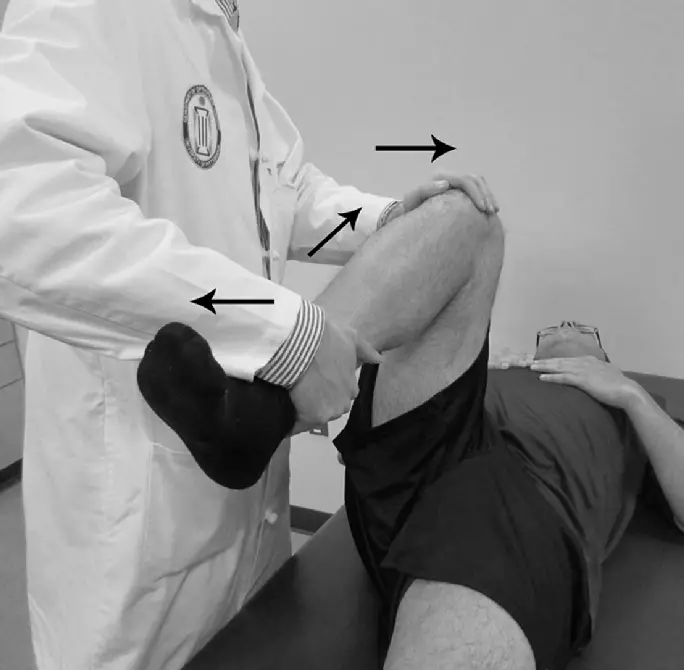Article reviewed and approved by Dr. Ibtissama Boukas, physician specializing in family medicine
The Fadir test is a quick and easy to perform clinical test. It is used by healthcare professionals to diagnose certain hip pathologies such as:
- femoroacetabular impingement
- hip chondropathy
- a labral tear
- a psoas tendonitis
- Legg-Calvé-Perthes disease
- hip epiphysiolysis
- etc.
The term “FADIR” is an acronym that designates the movements of flexion (F), adduction (AD) and internal rotation (IR) of the hip. These movements, when combined, induce contact between the femoral neck and the rim of the acetabulum.
Procedure
- The patient is in the supine position (lying on his back)
- The affected leg is passively moved by the examiner. The knee remains in full flexion.
- The examiner places the tested hip in full flexion, then induces an adduction movement combined with internal rotation
- It is observed whether there is a painful reaction from the patient, as well as the range of motion in comparison with the healthy side. The patient is asked to precisely locate the site of pain if it occurs.
Interpretation & translation services
A Fadir test is qualified as positive if it reproduces a characteristic pain (that of which the patient normally complains). Often it is located in the groin. This pain is sometimes accompanied by joint noise or a painful “click”. Eventually, noticeable apprehension also leads to a positive test.
Sometimes the patient will feel pain behind the buttock or along the thigh. This can direct the health professional towards a disorder of the sciatic nerve, or a piriformis syndrome.
If the test is positive, this may lead to further diagnosis including other clinical assessments such as range of motion, strength and other specific tests. Medical imaging tests could also be ordered to better visualize the integrity of the anatomical structures of the affected hip.
References
- https://www.physio-pedia.com/Anterior_Labral_Tear_Test_(Flexion,_Adduction,_and_Internal_Rotation)_FADDIR_TEST
- https://fpnotebook.com/ortho/exam/FdrTst.htm
- https://www.researchgate.net/figure/Patient-passively-placed-in-full-hip-fl-exion-adduction-and-internal-rotation-for-the_fig6_260377851
My name is Anas Boukas and I am a physiotherapist. My mission ? Helping people who are suffering before their pain worsens and becomes chronic. I am also of the opinion that an educated patient greatly increases their chances of recovery. This is why I created Healthforall Group, a network of medical sites, in association with several health professionals.
My journey:
Bachelor's and Master's degrees at the University of Montreal , Physiotherapist for CBI Health,
Physiotherapist for The International Physiotherapy Center


